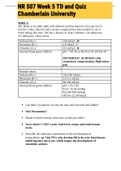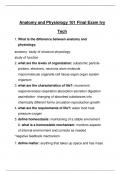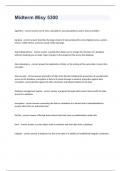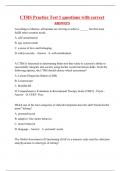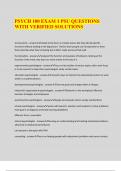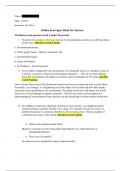Examen
NR 507 Week 5 TD and Quiz Chamberlain University (NR507)
- Grado
- Institución
Exam (elaborations) NR 507 Week 5 TD and Quiz Chamberlain University (NR507) PART 1: Ms. Blake is an older adult with diabetes and has been too ill to get out of bed for 2 days. She has had a severe cough and has been unable to eat or drink during this time. She has a history of Type I diabete...
[Mostrar más]
